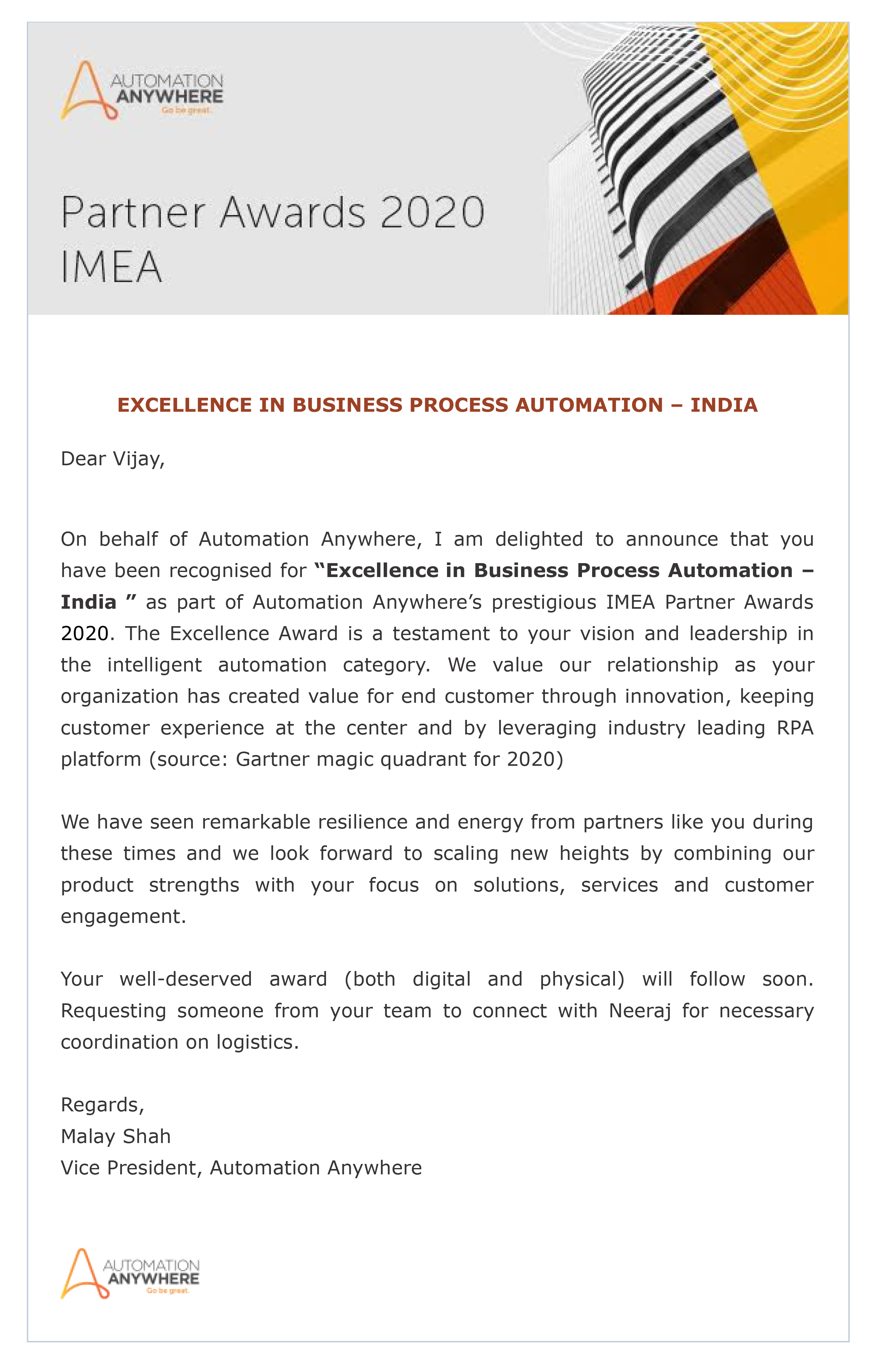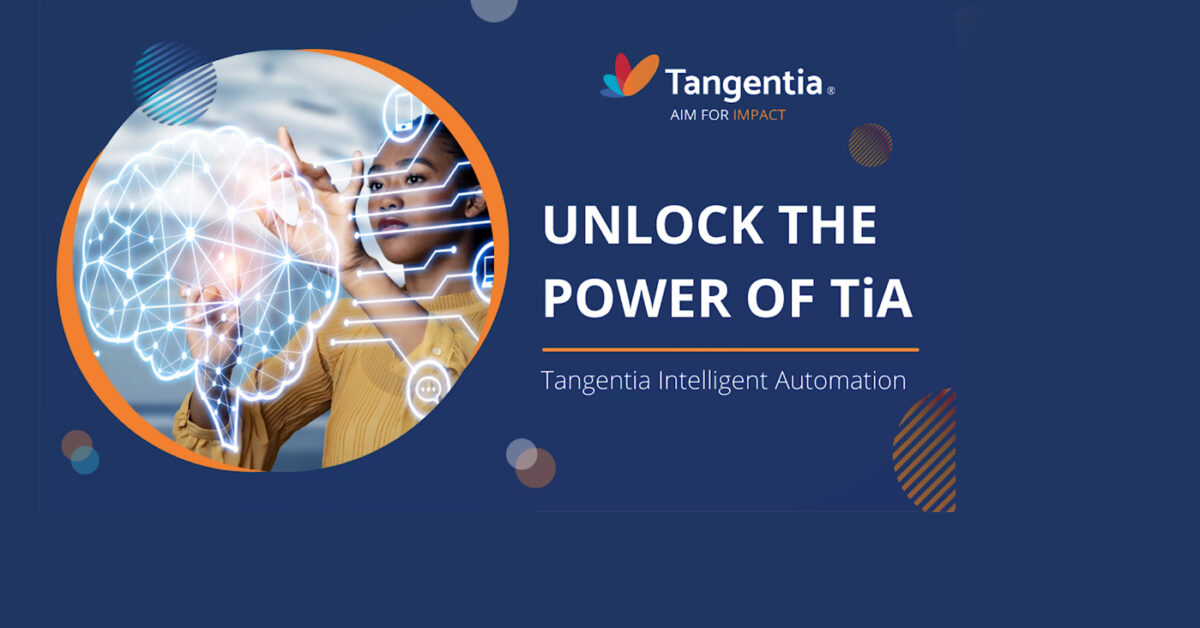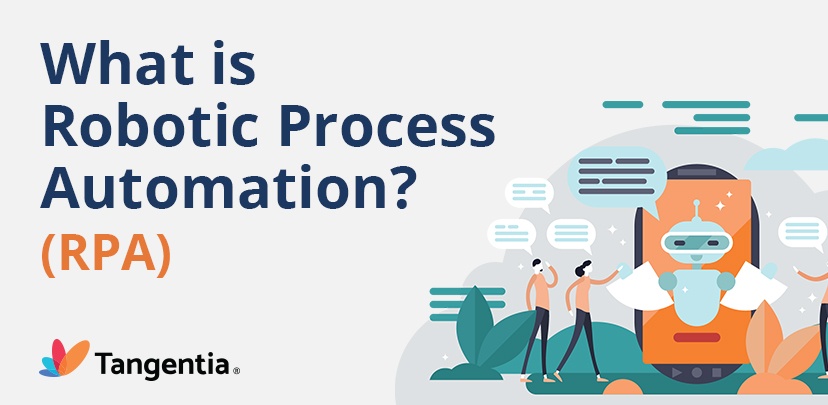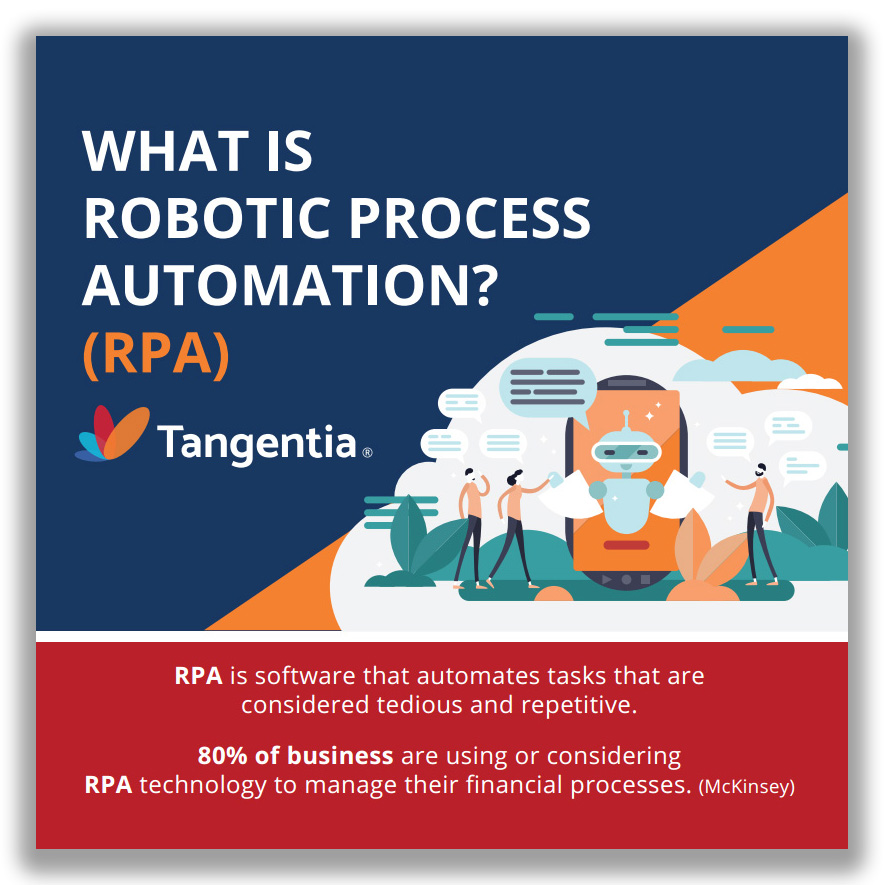Category: Automation
Infographic : What is Robotic Process Automation? (RPA)
Everything Dealers Need to Know about FASTag
Technology is evolving quickly in India and you need to know how to keep up. One of the upcoming changes is how drivers make toll payments when they are on the road. Up until the end of December 2020, drivers will still be able to pay the traditional way – using cash or credit. However, once January 1, 2021 arrives, they will be required to have FASTag.
What Is FASTag?
FASTag is an electronic toll collection system that is operated by the NHAI. It is a technology that is based on Radio Frequency Identification (RFID), which allows drivers to make toll payments without the need for cash or even credit or debit. They don’t even need to stop their car to pay their toll. The FASTag is adhered to the windscreen of their car and scanned whenever the car passes through a toll plaza. The toll is automatically deducted from the driver’s prepaid FASTag account.
Why FASTag?
The use of FASTag has significant benefits for drivers, as well as the highways systems of India. Drivers can move through toll plazas without the inconvenience of stopping or waiting in a lineup of vehicles. This can significantly cut down on their driving time. The FASTag system will keep traffic moving smoothly, preventing congestion at toll plazas. Best of all, the Indian government is offering 2.5 per cent cashback on toll payments made using FASTag.
How to buy a Fastag?
Drivers can get a FASTag from anyone of 23 certified banks, at National Highway toll plazas and through online retail platforms such as Amazon, Snapdeal, and Paytm. Once they have their FASTag, they can link it directly to their credit card, bank account, or wallet. Drivers can top up their prepaid account at any time and every time they go through a toll plaza, they will receive an SMS text message alerting them to the toll payment.
How TiA Industry Accelerator (IA) can help your customers with FASTag?
How does FASTag affect buying a new vehicle? Before that vehicle can be put on the road, a FASTag must be acquired and the account set up. This is yet another item in the long list of things a new car owner must deal with before they can drive off the lot.
The TiA Industry Accelerator is part of the Tangentia Intelligent Automation (TiA) Platform. The TiA IA is built to serve the needs of various industries, offering deployment-ready software solutions built to accelerate business processes. It is built with the automotive retail sector in mind and provides you with digital worker capabilities that allow you to:
- Streamline the collection of vehicle owner data from multiple outlets
- Automate all aspects of purchasing a vehicle from one convenient platform
- Enhance your customer service and increase satisfaction
- Automate mundane tasks for automotive dealerships so you can focus on core competencies
- Ensure regulatory and legal compliance in the automotive industry
The capabilities of TiA Industry Accelerator (IA) can be extended, modified or customized, depending on your needs, making it the ideal solution for all your process automation, including the purchase and setup of FASTag.
At Tangentia, we are ready to partner with you to offer smooth and speedy FASTag compliance for the vehicles sold under your dealership as mandated by the Union Ministry of Road Transport and Highways (MoRTH), India. This is a must since, as of April 1, 2021, new third-party vehicle insurance will be issued only if the vehicle has a valid FASTag.
So, let TiA IA help you help your customers purchase the vehicle they want without all the hassle that comes with a vehicle purchase. When you can do this, you will provide your customers with a superior buying experience, enabling them to hit the road immediately.
Get Started Today
Tangentia is a Platinum Partner of IBM and well as partners with Automation Anywhere, UI Path, Blue Prism, Adobe, Microsoft, Salesforce, Amazon and leading enterprise software vendors. We work with customers globally with offices in Canada, USA, Mexico and India to implement their RPA strategies.
Read Now
Embrace the Fractional Digital Worker (or Bot-as-a-Service) and Empower Your Organization
The use of automation in the workplace is a trend that has been gaining traction over the past few years. One of the most recent innovations has been the use of bots to perform simple, repetitive tasks that typically take up too much human time that could be better spent on high-value tasks.
Robotic process automation (RPA) advanced automation from individual tasks to entire processes. Then the digital worker came along and once again advanced the use of bots in automation, making it possible to provide full automation of entire back-office job roles for complete end-to-end automation.
However, with the need for easy scalability, automation has once again advanced. With the growing popularity of Bot-as-a-Service, it is important to understand what this means for your organization.
The Need for Scalability
Scalability is an important consideration when it comes to the automation of your workforce. According to a Deloitte Global RPA Survey, a mere 3% of organizations have been able to successfully scale their digital workforce. Yet, in today’s chaotic global climate the need to scale is crucial for survival.
This is the motivation behind Tangentia’s development of their TIA Digital Worker, a cloud-based automation system that let’s you choose how much bot service you need and when you need it.
The Power of the TIA Digital Worker
The TIA Digital Worker is software that takes advantage of everything AI, RPA and machine learning (ML) have to offer. When you embrace the cloud-based TIA Digital Worker, you will be able to take full advantage of the service without the hassle of on-premise hardware and the difficulty that comes with scaling to meet your needs.
Tangentia makes it possible for you to purchase full-time bot usage or to purchase bot usage for just a few hours a day. Scale those bot hours up or down as needed to maximize automation without overpaying. Bot usage is charged on a monthly basis, and there are peak hours (10 am to 5 pm) and non-peak hours that allow you to manage your use of the bots for maximum benefit at minimum cost.
Best of all, the benefits of TIA Digital Worker go beyond the power to scale. Efficiency skyrockets as employees are freed up to focus on tasks that have more value for the organization. This includes more time spent on innovation and increased customer interaction and satisfaction. Additional benefits include:
- Cross-departmental functionality
- Full automation of an entire job role, individual processes within a role or specific tasks within a process
- Full customization to suit the unique needs of your organization
- Ability to set the parameters for complete control over your digital workforce
- Enhanced, easy communication and collaboration with your digital workforce
The use of the TIA Digital Worker also puts you in the right position to take full advantage of hyperautomation, which takes this end-to-end automation and adds a level of intelligence to it that is capable of capturing and analyzing data in real time to support decision-making within the organization.
With a constantly changing global business environment and increasing demands on organizations to meet customer needs, increase productivity and cut costs, the time to adopt automation is now.
Get Started on Your RPA Journey Today
Talk to an RPA Expert to learn how to get started
Tangentia receives Automation Anywhere’s IMEA Partner Awards 2020
At Tangentia, we are proud to announce we are the recipient of the “Excellence in Business Process Automation – India” award as part of Automation Anywhere’s esteemed IMEA Partner Awards 2020.
As a leader in Robotic Process Automation (RPA), Automation Anywhere is dedicated to helping organizations around the world move into the 21st century by creating innovative Intelligent Digital Workforce’s that will automate the fundamental processes they need to operate. As an Automation Anywhere partner, Tangentia has its finger on the pulse of agile digital transformation, thinking outside the box and delivering innovative solutions on a global scale.
The excellence award is a testament to Tangentia’s vision and leadership in the intelligent automation category and our dedication to customer experience, which is at the core of everything we do. This is in large part thanks to our work with Automation Anywhere. “We hold our partnership with Automation Anywhere in high regard,” says Tangentia CEO Vijay Thomas. “It has helped us provide even more value to our customers through the creative use of cognitive bots and our proven ‘global boutique’ deliver model. This award reinforces our commitment to RPA, helping organizations with their digital transformations and partnership with Automation Anywhere.”

Get Started Today
Tangentia is a Platinum Partner of IBM and well as partners with Automation Anywhere, UI Path, Blue Prism, Adobe, Microsoft, Salesforce, Amazon and leading enterprise software vendors. We work with customers globally with offices in Canada and India to implement their RPA strategies using an agile methodology.
Read Now
Making Automation More Intelligent with Hyperautomation
Automation is leading the technological revolution of the early 21 st century. Tools like artificial intelligence, robotic process automation (RPA), and machine learning (ML) have been developed and adopted by many industries to automate and streamline tasks and processes. This frees up employees to engage in more meaningful work. However, Gartner argues that RPA and similar tools are not enough on their own. Instead, Gartner believes organizations need to adopt the concept of hyperautomation, which they labeled the No. 1 technology trend of 2020.
What Is Hyperautomation?
Automation has gone through an evolution over the past few years. It began with the automation of simple tasks, then moved on to the automation of individual processes, then progressed to automation across multiple processes. Hyperautomation is now taking the concept of automation to the next stage of its evolution.
Hyperautomation is a term that was introduced by Gartner. It encompasses a combination of complementary automation technologies – RPA, AI, ML, and intelligent business management software (iBPMS) – that together take the automation of business processes beyond what any single automation tool can offer.
What Hyperautomation Can Do?
RPA is confined to interpreting structured data based on a set of established rules. This limits RPA’s ability to deal with more complex data analysis. However, hyperautomation can handle unstructured data, in addition to structured data, which turns it into a powerful analytical tool.It uses AI and ML to learn as new data comes in and outcomes change.
What this means for organizations is simple. Hyperautomation will allow you to provide an end-to-end solution that goes beyond just automating repetitive tasks. Instead, it provides intelligent monitoring and analysis that has the ability to assess and reassess data across multiple systems and departments in order to augment and support decision-making. And the best part is that this is all done in real-time. Hyperautomation analyzes the data as it flows in,which means decisions can be made in a timely manner.
The capabilities of hyperautomation are so powerful that it can result in the development of what Gartner has termed a digital twin of the organization (DTO). A digital twin is a system that all organizational departments and interested parties can connect to in order to get the information they need. This eliminates the need for multiple channels through which data is delivered and allows hyperautomation to provide ongoing intelligence that drives business decisions by making it easier to see opportunities as they arise.
The result? Resource optimization, lower costs, improved employee satisfaction, enhanced customer relationships, and increased revenues. Hyperautomation will also make your organization more agile, providing the ability to change processes as required to keep up with internal organizational changes, industry changes, and external changes (such as the COVID-19 pandemic of 2020) that can affect operations.To learn more about what hyperautomation can do for your organization, contact Tangentia today.
Get Started Today
Tangentia is a Platinum Partner of IBM and well as partners with Automation Anywhere, UI Path, Blue Prism, Adobe, Microsoft, Salesforce, Amazon and leading enterprise software vendors. We work with customers globally with offices in Canada and India to implement their RPA strategies using an agile methodology.
Read Now
A Quick Guide to Warehouse Inventory Management in 2020
The holidays are fast approaching, and that means retailers and wholesalers must be efficient in organizing their products and managing the inventory of their products.
Depending on the size of your operation, how you manage your products may differ. However, warehouse inventory management is not just a requirement for compliance with SEC regulations and the Sarbanes-Oxley Act (SOX) for public companies—it’s crucial to the success of any retail company.
We’ve put together this brief guide to help you understand the basics of warehouse inventory management.
What Is Warehouse Inventory Management?
Warehouse inventory management is the system used to organize and track all of the company's owned products. For warehouse operations, this helps to ensure the right level of inventory is in the right place at the right time. Inventory is then converted to revenue once it’s sold.
In the United States, manufacturers, retailers, and merchant wholesalers carried more than $1.9 trillion in inventory in June 2018, according to the U.S. Census Bureau.
Accurately evaluating the inventory for the company’s balance sheet requires either physical stock count or an automated inventory system that creates an accurate record of each inventory-related transaction.
This quantitative product management differs slightly from a company’s warehouse management system (WMS), an umbrella term that supports the entire operation of a warehouse, including inventory management.
The best warehouse inventory management systems keep track of products and provide actionable business intelligence, such as identifying trends in product performance and sending reorder notifications when stock is low.
Current warehouse inventory management systems are outdated and often haven’t embraced everything automation has to offer.
Features of Inventory Management
There are many steps involved in warehouse inventory management, some of which include:
- Picking and packing
- Shipping
- Managing locations
- Receiving orders
- Tracking inventory levels
- Cycle counting
- Generating reports
- Providing business insights
What Are the Different Types of Inventory Management?
Manual
Every step of the delivery, tracking, loading, and data manipulation is done by workers. This manual system can increase the risk of human error at any point in the inventory management process. If there is ever a mistake, the only method of resolving the problem is another manual re-do.
Another downside to this type of inventory management is its unsustainability for more significant warehouse operations. Without computerized report generation, companies may see difficulties in turning paper-based information into useful data.
Barcode
This system uses the familiar label of black stripes that are affixed to the product, packaging, or pallet. Using wearable barcode readers, workers can speed up warehouse inventory management and save seconds scanning per item. This digital format is efficient and accurate by counting goods in real-time.
RFID
Radiofrequency identification tags are found in two configurations: active and passive. Active systems use battery-operated tag readers located throughout a warehouse and updates of inventory count and location. Passive systems are read-only when someone activates the readers through hand-held devices. Passive technology can be read at up to 40 feet, while active readers are effective up to 300 feet, but both systems automatically record inventory.
Warehouse Robots
With growing advancements in technology and automation, companies are starting to turn to optical systems mounted on the ground or aerial platforms. These systems use machine learning to read existing labels without barcodes or RFID and maintain accurate, up-to-date inventory.
Warehouse Inventory Automation: Is This the New Norm?
Modern supply chains are more complex than ever. Traditional manual processes are no longer viable for businesses that want to optimize workflows and reduce wasted resources.
Automation is the natural solution to these problems. It’s ideal for individual warehouses or companies that support numerous locations across the entire supply chain.
Effective fulfillment requires sophisticated solutions that are able to predict trends, make actionable recommendations, and increase the visibility of potential issues before they turn into larger problems.
Successful manufacturers, 3PLs, and retailers know the importance of optimized supply chains. That’s why they’ve heavily invested in cloud-based automation solutions for their supply chains.
Automate Your Warehouse Inventory Management With Tangentia
Here at Tangentia, we understand the transformative difference automated solutions can make for your business.
When you’re processing hundreds or thousands of pallets or cartons per day, automated processes can significantly save time, effort, and costs. For many retail companies, creating greater warehouse inventory management efficiency translates to a multi-million dollar impact.
Are you interested in learning more about warehouse inventory management automation? Get in touch with Tangentia today to learn more.
Get Started Today
Tangentia is a Platinum Partner of IBM and well as partners with Automation Anywhere, UI Path, Blue Prism, Adobe, Microsoft, Salesforce, Amazon and leading enterprise software vendors. We work with customers globally with offices in Canada and India to implement their RPA strategies using an agile methodology.
Read Now
How AI Can Support the New (and Old) Way of Learning
When COVID-19 made its presence know in early 2020, everything ground to a halt – including school. A whopping 1.6 billion children in 191 countries were out of the classroom for the remainder of their school year, with parents trying desperately to help them learn at home. Meanwhile, education institutions, private schools and teachers around the world have been scrambling to map out a strategy for bringing kids back to school in the fall. Those strategies are now in place and kids are going back.
The development of the new back-to-school strategy has created the need to adopt technology that will support remote learning. And while many schools hope to see their students back in the classroom, the reality is often a hybrid model of learning, with some of it done remotely, or a full remote learning schedule. Fortunately, the technology exists to make this remote learning journey a smooth one.
RPA to the Rescue
AI In Education & Private School Learning Environments Not long ago, it was thought that the adoption of artificial intelligence (AI) technology in the classroom would lag far behind that of other industries. However, the need for remote learning that COVID-19 has created is shining new light on the need for AI technology to support learning.
Fortunately, AI, along with the Internet of Things (IoT), has advanced enough to become a powerful tool for education systems, the teachers they employ, and the students they educate. Simply put, AI can benefit the teachers and the students in many ways.
Teacher Benefits
AI can help teachers, whether they are teaching in the classroom or remotely. According to McKinsey, teachers work 50 hours a week and only 49% of that time is spent interacting with students. In addition, 20%-40% of those hours are spent on tasks that could easily be automated with the technology that currently exists. That is time teachers could be using to
improve the student experience and provide them with higher quality teaching.
Tasks that can be automated include administration, preparation, and student evaluation and activities that directly support student learning. This would benefit students whether they are learning in the classroom or online.
Student Benefits
The use of AI and chatbot technology can bring immense benefit to students, either in the classroom or remotely. This technology makes it possible for teachers to personalize the learning of every child they teach. This tailored learning approach will take into account personalities, learning disabilities, learning styles, and interests to create a unique and rewarding experience each and every student.
AI can also act as a teaching assistant, with chatbots available 24/7 to answer student questions as they arise. This means a child doing work at 8:00 pm can ask a question if they get stuck on a problem and receive an immediate answer.
Student safety is also a major issue when it comes to going back to the physical classroom during the COVID-19 pandemic. AI can be used along with IoT to connect devices with cameras and sensors to gather data in real-time and detect unsafe situations as they unfold. Alerts can be sent to teachers and staff, who are not able to monitor every child at every moment,
allowing them to respond and ensure a safe environment for everyone.
Ultimately, the technology that is available to education administrations can support teachers and students in ways that can help them maximize their time, improve outcomes, and increase safety. With student needs growing more complex and no way of knowing how long this current pandemic will last, the time to adopt AI in the classroom, whether physical or virtual, is now.
Learn more about Tangentia’s TIA (Intelligent Automation) Education platform and discover how to the harness the power of AI to streamline processes, support students and enable
learning.
Get Started Today
Tangentia is a Platinum Partner of IBM and well as partners with Automation Anywhere, UI Path, Blue Prism, Adobe, Microsoft, Salesforce, Amazon and leading enterprise software vendors. We work with customers globally with offices in Canada and India to implement their RPA strategies using an agile methodology.
Read Now
AI Powered Chatbots in Higher Education | A Positive Impact for Students and Administrations
Artificial intelligence (AI) is taking the world by storm. The global intelligent virtual assistant (VA) market is set to reach more than $25 billion by 2025. In day-to-day life people interact with AI for shopping, banking, and smart home devices. In business, chatbots have made customer communications more efficient and a VA can help people organize their schedules and more quickly connect with the information they need to do their job better.
A VA is an AI technology that is also useful in the realm of higher education. In this setting, the VA can transform the university and college experience by helping students access the information they need when they need it. It can also help universities manage the inquiries and communications they receive from students and the general public.
How Students Can Use AI Powered Chatbots
AI Powered Chatbots make it possible for each student to individualize their on-campus experience and education. From asking questions regarding registration to finding out where the nearest campus coffee shop is to getting help with their work, an AI Chatbot is there to help students. There are many ways that students can enhance their college experience with an AI Chatbot such as:
- Act like a teacher’s assistant, with 24/7 availability to answer student questions and complete tasks more quickly than a human assistant
- Provide individualized teaching methods to help students learn better and more efficiently
- Help international students with application and administration support using multi-language capabilities.
- Provide students with reminders, on-campus information, help connecting with tutors, and answers to questions about facilities and life on-campus
- Connect students with the on-campus support and processes they need to ensure their success and post-secondary education transition is as seamless as possible
AI Chatbot technology is advancing quickly, improving its capacity to provide more intuitive guidance for each student based on their individual needs.
How AI Powered Chatbots Can Help Universities
Universities have a limited staff that needs to service a very large student body. If enrollment grows, hiring more staff can be costly. With the use of a AI Chatbots, a university can easily and efficiently service a large student body by deploying an AI Chatbot to:
- Answer standard student questions
- Provide information to students quickly
- Flag more complex questions or problems for staff to take care of
- Free up staff to have more one-on-one time to help students where they need it most
- Act as a teacher’s assistant for online and virtual learning environments
Introducing TIA – Tangentia’s Intelligent Automation Chatbot powered by IBM Watson
TIA can be built, trained, and deployed to provide individualized conversations via any application, device, or channel. It has the capability to:
- Learn from minimal data
- Process unstructured data
- Handle massive amounts of data
- Act as a decision support system for students
- Be deployed on the public cloud and on-premises networks
- Recommend improvements to the system
- Rely on people or its own search engine as fallback
These capabilities provide higher education institutions with the means to offer the following services:
Language:
- Assistant
- Document Conversion
- Natural Language Classifier
- Natural Language Understanding
- Tone Analyzer
- Retrieve and Rank
- Personality Insights
- Speech:
- Speech to Text
- Text to Speech
Vision:
- Visual Recognition
Data insights:
- Discovery
- Knowledge Studio
- Discovery News
As an example of the use of TIA, an IBM Powered Watson Chatbot, a Canadian University was looking for a chatbot digital assistant that would allow the Office of the Registrar to improve their response time to student inquiries, particularly with online inquiries via email and direct chat services. With more than 80,000 emails, 71,000 phone calls, and 37,000 in-person inquiries, staff was frequently overwhelmed and working overtime to keep up.
Tangentia was chosen as the service provider and to demo their TIA Chatbot to the University. We trained the chatbot to help students and website visitors find the information they needed quickly and easily. In addition, we were able to provide smart integration with the University’s website and include live agent integration. Not only that, but we worked closely with the IBM Watson AI team and had a working chatbot demo built within five days!
Contact Tangentia today for more information and to schedule a POC on the IBM Watson Virtual Assistant and TIA.
Get Started Today
Tangentia is a Platinum Partner of IBM and well as partners with Automation Anywhere, UI Path, Blue Prism, Adobe, Microsoft, Salesforce, Amazon and leading enterprise software vendors. We work with customers globally with offices in Canada and India to implement their RPA strategies using an agile methodology.
Read Now
RPA Is Perfectly Positioned to Transform the Auto Sales Industry
When a customer wants to buy a car and applies for an automobile loan, they choose the vehicle they want, put in the application, and hand over all their financial documentation. Then all is quiet on their front while they wait – and wait – to find out if they have been approved.
However, behind the scenes there are a number of tasks being done to process that loan application and finalize the sale of the vehicle. Most of these tasks are tedious, repetitive, and done manually, which is why the customer is left waiting. Simply put – it takes time.
RPA to the Rescue
This is where robotic process automation (RPA) can help. RPA is an automation system that can take these tedious and repetitive tasks and do them more quickly and more accurately than any human. Whether it is checking a customer’s credit history, verifying their information and documentation, loan boarding, sending out a welcome letter, or ensuring the title transfer of the vehicle, it can all be automated.
This is incredibly important at a time when auto retailers are facing a potential increase in demand for new vehicles. While auto sales have gone down due to COVID-19, that same reason is prompting many people to purchase a vehicle to stay off public transportation. It’s a potential silver lining for the auto industry.
Of course, the automation of the automobile industry isn’t new. Automation has been used on the factory floor for years and the industry has always been at the forefront of innovation when it comes to the manufacturing side of things. It is the sales side that, until now, has been lacking. Fortunately, that will soon be a thing of the past.
RPA Success in India
One of the hottest auto-buying markets in the world right now is India. In February of 2018, the sale of passenger vehicles rose by over 7%. Seven cars were being bought every minute. Tangentia saw this as the ideal market to integrate RPA into the auto loan process.
We partnered with the largest car dealership in India, to implement an RPA solution that would help them with their auto sales process. When a vehicle is purchased in India, the purchaser has to register with 12 different agencies to finalize the sale. These are agencies such as the department of transportation, insurance, roadside assistance, and vehicle warranty.
Prior to RPA implementation, the entire purchase and loan approval process was done manually. It took two days before a customer was approved and all the paperwork was done. It was a time- and energy-intensive process for sales associates. Yet, RPA took the entire process and shortened it from a couple of hours to minutes.
This freed up associates’ time, made the process more efficient, and reduced the number of errors that occurred. It also made the customers happy because they didn’t have to wait long to get loan approval and get their new car on the road. This has significantly impacted the ROI for Indus Motors.
The Bottom Line
The more time sales associates spend on the sales floor, the more vehicles a dealership will sell. With RPA, sales associates won’t be tied to their computer and phone dealing with the tedious loan approval process and all the other number of things that must be done when selling a vehicle. Instead, RPA bots can take care of all that behind-the-scenes work and sales associates can be where they’re needed most – on the front line making sales.
Get Started Today
Tangentia is a Platinum Partner of IBM and well as partners with Automation Anywhere, UI Path, Blue Prism, Adobe, Microsoft, Salesforce, Amazon and leading enterprise software vendors. We work with customers globally with offices in Canada and India to implement their RPA strategies using an agile methodology.
Read Now































